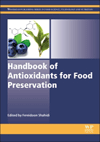The national conversation about food is increasingly framed by what it is not. Not genetically modified, no sugar added, no high-fructose corn syrup, no hormones, no gluten and no artificial preservatives or colors. These so-called absence claims put food makers on the defensive. Having to defend their choice of ingredients leaves marketers little time to talk about what’s right with their foods and beverages. More importantly, they lose control of the message they want to send about their products.
It’s not as if shoppers don’t know what is in the can or box they pick off a grocer’s shelf. For the most part, food-labeling laws give consumers the information they need to decide whether the food meets their dietary needs or fits their social worldview. Nutritional labels can steer shoppers away from fatty, salty or sugary foods. Ingredient statements warn consumers of allergens or additives they might want to avoid (like HFCS). Meanwhile, certifications convey a status like organic, fair trade, kosher or halal. A recycling logo on the package connotes eco-stewardship.
While it would seem that there is sufficient information to make an informed decision about what to buy, the current level of transparency is not enough for those who want a ban on certain ingredients or agricultural practices. Animal activists fight dairy farmers over real or perceived mistreatment of cows. If the farmers don’t change, activists take their fight up the supply chain and pressure the buyers of milk (that is, dairy processors) to sever relationships with those farmers.
The days when the debate was about what was a “natural food” seem quaint compared to the ferocious fights of today swirling around the labeling of genetically modified organisms; serving flavored milk to school children; selling raw milk to the public; and the merits of plant-based dairy analogs.
Defining natural foods
Attitudes about what makes a food “natural” have changed. Consumers are the ones making the call. Today, a natural food is one with few ingredients and little processing, said Amy Sousa, a senior research analyst with The Hartman Group, a Bellevue, Wash.-based consulting group. “Natural” used to mean a food contained no artificial flavors, colorings or preservatives. But the word has become so misused and overused by food marketers that it no longer has any meaning, she said.
A 2012 survey by The Hartman Group found that in just two years fewer consumers believe the descriptor “no artificial flavors, colors or preservatives” implies or suggests that a food is natural. Of particular interest to the dairy industry, consumers also are discounting the claims “absence of growth hormones,” “absence of GMOs” and “absence of pesticides” when it comes to natural foods. (See table.)
The Millennial generation (roughly those born between 1980 and 1995) has been instrumental in shaping the conversation about food. They seek transparency and authenticity about where food comes from and how it is made, and they want those answers wrapped in a narrative or a story, Sousa said. The generation is responsible for the farm-to-table movement and the popularity of community-supported agriculture and farmers’ markets.
Food marketers have taken note and use these themes in speaking to mainstream shoppers. In their advertisements, dairy marketers are drawing a line from the farm directly to the home. Notably, the line does not pass through a dairy processing facility. A television ad for Daisy Brand sour cream singles out the ingredient label (simply “Grade A cultured cream”). Philadelphia Brand cream cheese depicts cows and milk as the narrator states “fresh local milk, real cream and no preservatives” make cream cheese that goes “from the farm to our fridge in just six days.”
An ad for Kraft Singles starts with an image of a dairy farm, transitions to a pail of milk and fades to individually wrapped cheese slices. In February, Kraft Foods replaced artificial preservatives with natamycin (a natural mold inhibitor) in its American and White American cheese slices in response to consumer demand. Kraft also uses natamycin in its other branded cheese products.
In May, Kraft Foods spokeswoman Jody Moore told Dairy Foods, “We continue to look for ways to help our fans understand our products – where they come from, what’s in them and how they are made.” The dairy processor created a website (KnowYourSingles.com) when it removed the artificial preservatives.
“The site talks about the ingredients and process for making Kraft Singles, and helps provide easier-to-understand explanations of certain ingredients, such as emulsifiers and lactic acid,” Moore said.
Where have you gone, Louis Pasteur?
Perhaps another reason dairy marketers bring cows into the picture is because plant-based beverage brands have re-defined the word milk, leading many consumers to believe that milk is sourced not from a pasture-grazing ruminant but from an almond tree, soy bean, hemp plant or rice paddy. These nondairy beverages (often processed and packaged by dairy-milk bottlers, it should be noted) are building sales while per capita consumption of dairy milk declines. Dairy processors complain that they are hand-cuffed to a federal standard of identity that limits their ability to describe beverages made with milk as “milk.”
As if battling the plant-based milk alternatives is not enough, dairy interests have two other fights on their hands. One is the vegan “milk is murder” crowd and the other is the raw milk faction. The dairy industry will probably never change the minds of the former, and has all but lost the battle with the latter.
Although it has powerful allies in the federal Centers for Disease Control and Prevention and state public health agencies, the dairy industry has not stopped retail sales of raw milk. It is available in 40 states, either through sales at farm stores, conventional grocers or through cow shares. Sally Fallon Morell, the president of the Weston A. Price Foundation, said her goal is “to make this wonderful food available to everyone in the United States.”
WAPF spokeswoman Kimberly Hartke said people need access to raw milk for therapeutic reasons. The tax-exempt foundation is a leading proponent of consuming raw milk and other raw foods for health reasons. It encourages the consumption of full-fat, unpasteurized milk, claiming it is safe to consume, builds strong bones and teeth, and alleviates or cures conditions that otherwise would require medication. The pasteurization process, WAPF maintains, damages milk’s nutrition.
In a video on the CDC website, Dr. Robert V. Tauxe said “there are no health benefits from drinking raw milk that cannot be obtained from drinking pasteurized milk that is free of disease-causing bacteria.”
The dairy industry is against raw milk sales on the grounds that it is a public health and safety issue, noted Ruth Saunders of the International Dairy Foods Association. The National Milk Producers Federation, the dairy farmers’ lobby, opposes raw milk sales for the same reason, and to protect milk’s reputation as a healthy food.
The CDC has linked two deaths to raw milk, but they were from homemade raw milk cheeses, not from fluid milk. WAPF representatives bolster their arguments with anecdotes about how drinking raw milk improved medical conditions. But stories told on the RealRawMilkFacts.com website (supported in part by the law firm Marler Clark) depict something altogether different. One heartbreaking video interview is with parents who fed their 9-year-old daughter raw milk. She became violently ill, suffered kidney failure and had her gall bladder removed.
The Centers for Disease Control and Prevention says pasteurized milk is safer to drink than raw milk. The rate of sickness caused by unpasteurized milk is 150 times greater than outbreaks linked to pasteurized milk. The CDC maintains that in states where raw milk sales are legal the rate of outbreaks was twice that of states where such sales are forbidden.
So far this year, there have been no recalls of pasteurized milk, but health departments in two states issued warnings over raw milk. In April, Pennsylvania found a possible Listeria monocytogenes contamination of raw milk sold at an on-farm store in Middleburg. The state’s Department of Agriculture warned consumers to discard the milk, but found no reports of illnesses. Earlier this year, South Dakota inspectors found listeriain raw milk sold near Brookings.
The Pennsylvania Department of Health puts it this way, “Many negatives are being assigned to the pasteurization of milk. Little, if any of it, is supported by the literature currently available. The benefits of pasteurization far outweigh any possible nutritional harm.”
Back to the earth
While there is no federal standard for what constitutes a “natural food,” the U.S. Department of Agriculture has one for organic food. The Organic Trade Association, an industry group, reports that 42% of parents surveyed say their trust in the USDA organic seal has increased but a Hartman Group report said that 14% of consumers are suspicious that food manufacturers are making organic foods correctly.
The Hartman Group says the organic foods category has gone “mainstream,” with three out of four U.S. consumers buying organic products. For further evidence, look no farther than to mass merchandiser Walmart which in April gave the organic industry a boost when it said it would try to drive down the cost of organic products by carrying the Wild Oats line of packaged foods.
Organically grown food is not more nutritious than conventionally farmed food, according to a 2012 study by Stanford University. Researchers there did concede that consumption of organic foods can reduce the risk of pesticide exposure.
Milk tells a different story. A study of organic milk by Washington State University in 2013 found dietary benefits that conventional milk does not offer. Writing in the February Dairy Foods, WSU Professor Charles Benbrook explained that “organic whole milk had, on average year round, 18% higher levels of another heart-healthy fatty acid called CLA (conjugated linoleic acid) than conventional milk” as a result of cows on organic dairy farms eating pasture grasses. He concluded that “All milk is good for you, but organic whole milk is even better.”
Food nutrition aside, consumers buy organic to avoid pesticides, antibiotics, growth hormones and genetically modified organisms, according to the Organic Trade Association.
Organics, GMOs and labeling
Organic farming is inextricably linked to opposition to genetically modified organisms. Organic Valley, the marketing arm of the Cropp cooperative, says its farmers do not use GMOs in their products, processes or feeds. And it is pushing for the elimination of GMOs until it is proven “beyond any doubt” that they are safe. In the meantime, Cropp and other like-minded organizations, want mandatory labeling. Stonyfield, another organic brand, states on its website that “the jury is still out on whether or not eating foods made with GMO ingredients is harmful to our health.”
The USDA, FDA, World Health Organization and National Academy of Sciences say GMO ingredients are safe and there are no negative health effects. The Coalition for Safe Affordable Foods, funded by the food industry, touts the safety and health benefits of genetically modified foods, which it notes are 70% to 80% of the foods we eat. On the other end of the spectrum, The Center for Food Safety states the FDA’s “failure to require testing or labeling of GE foods has made millions of consumers into guinea pigs, unknowingly testing the safety of dozens of gene-altered food products.”
But health concerns are not the only reason why people oppose GMOs, noted Organic Valley CEO George Siemon. Some are against manipulating and splicing genes for religious or philosophical reasons, he said.
The GMO issue puts organic dairy at odds with some in the conventional dairy industry. While the organic industry and its allies call for mandatory labeling, IDFA, National Milk and others support a voluntary law at the federal level. Siemon said he also supports a national regulation, even though his members do not use GMOs because no food manufacturer could conduct interstate commerce efficiently if there were a patchwork of state laws.
Ax grinding for everyone
Agriculture has become a convenient punching bag for science deniers, conspiracy theorists, libertarians, tree huggers, food snobs and just about anyone with a social or political ax to grind. To some, Congress and the executive branch are suppressing an individual’s freedom to make food choices. Others see the government as doing the bidding of Big Food by not requiring explicit labeling of the use of GMOs. Foodies would have everyone cooking every meal from scratch with locally sourced, humanely raised animals; while those in the animal rights community equate milk with “murder.”
We all have to eat, so perhaps that is the reason the food industry finds itself at the center of so many controversies. Sousa, the food analyst at The Hartman Group, notes that food is about identity. Food is tied to religion, geography and one’s beliefs about the body, added Sousa, who earned a PhD in medical anthropology.
Fluid milk dairies, cheesemakers and ice cream companies cannot hide or ignore these conversations. They need to sit around the table and be involved in the conversation about how food moves through the supply chain. The dairy industry has nothing to apologize for.






